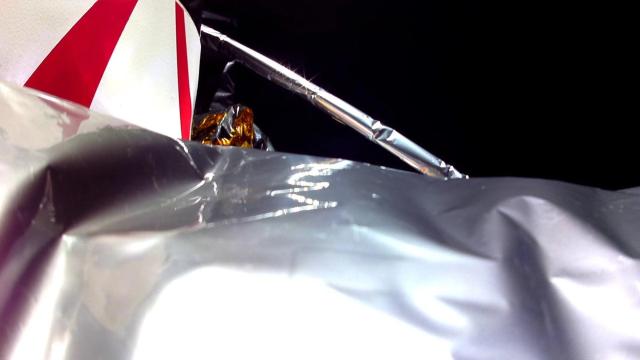The Peregrine lunar lander is coming back home to die. Astrobotic’s shiny gold spacecraft is on a trajectory towards Earth, where it is expected to burn up in the planet’s atmosphere to conclude its tragic demise.
Peregrine has been operational for more than a week, and the spacecraft is stable and responsive, according to Astrobotic. With zero chance of it being able to land on the Moon, however, the company has decided to terminate the mission. In an update shared on Saturday through X, Astrobotic announced that Peregrine is “on a path towards Earth, where it will likely burn up in the Earth’s atmosphere.”
On its current trajectory, Peregrine will re-enter through Earth’s atmosphere on Thursday, January 18. “Astrobotic worked with NASA’s assistance to assess the most appropriate action, and this is the best approach to safely and responsibly conclude Peregrine Mission One,” Nicola Fox, associate administrator of NASA’s Science Mission Directorate, is quoted as saying in a NASA statement.
Peregrine launched on January 8 on board United Launch Alliance’s Vulcan Centaur rocket, with plans to land on the Moon in late February. The 2,829-pound (1,283-kilogram) spacecraft powered on and even made contact through NASA’s Deep Space Network, but Peregrine’s journey to the Moon started falling apart shortly afterwards. The lander began to lose propellant at a critical rate, prompting Astrobotic to give up on any chance of its lunar lander touching down on the Moon. The company believes a faulty valve was the cause behind Peregrine’s anomaly.
Over time, the propellant leak practically stopped, likely due to a decrease in pressure, and Peregrine continued to persevere in the depths of space. Last week, Astrobotic announced that it successfully powered up 10 payloads on board Peregrine and received data from all nine payloads designed to communicate with the lander.
Peregrine is part of NASA’s Commercial Lunar Payload Services (CLPS) initiative, which is meant to help the space agency in its quest to return humans to the Moon and make it a sustainable place for long-term human presence. It was also meant to usher in a new era for private companies by granting them greater access to the lunar surface, Astrobotic was hoping to become the first private company to land on the Moon.
“Since the Peregrine lunar lander’s anomaly occurred…we have been evaluating how best to safely end the spacecraft’s mission to protect satellites in Earth orbit as well as ensure we do not create debris in cislunar space,” Astrobotic wrote in a statement. “Ultimately, we must balance our own desire to extend Peregrine’s life, operate payloads, and learn more about the spacecraft, with the risk that our damaged spacecraft could cause a problem in cislunar space.”
As such, the company made the responsible decision to let Peregrine continue on its current trajectory towards a fiery re-entry through Earth’s atmosphere. Among the scientific instruments and other payloads on board are the cremated remains and DNA of individuals. The fate of these precious items has not been disclosed, but we hope to learn more during a press conference scheduled for 12:00 p.m. ET on Thursday, January 18.
